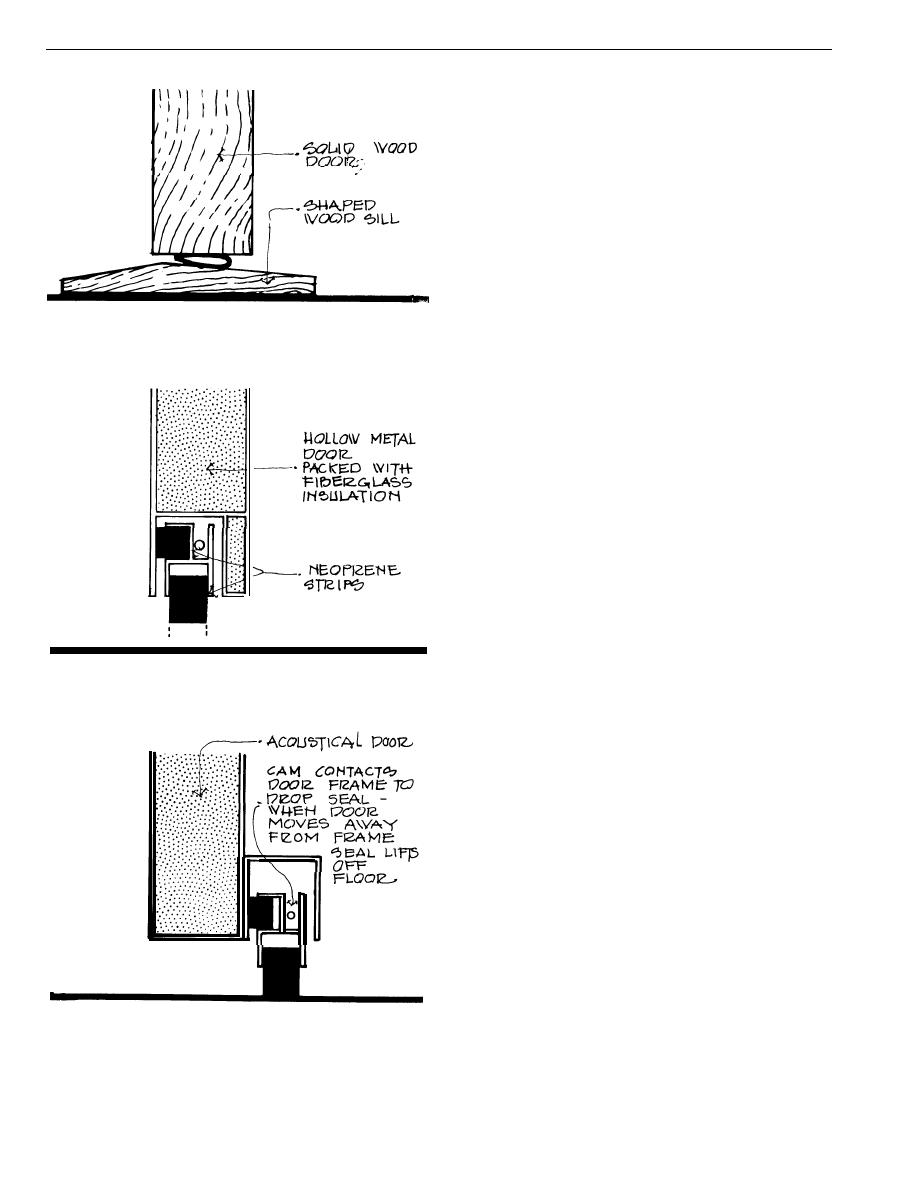
DG-1110-3-119
Design Guide: Band Training Facilities
Practical Approaches for Accoustic Construction
March 1983
A raised threshold is most effective for stopping noise, but
it makes moving heavy musical instruments and sound
equipment difficult, and it may be a danger when a large
number of people are using the door in a short time.
Raised threshold seals (Figure 5-16A) are effective for indi-
vidual Practice Rooms. The wood door shown compres-
ses a neoprene bulb sound seal against the wood threshold.
Cam-operated drop seals (5-16 B and C) are recommended
for larger music rooms. The cam is a rod through the door,
which is pushed by the frame when the door closes, and
lowers the seal. When the door opens, the cam is released
and the seal raises by springs. The path over the bot-
tom seal is also closed by a seal that slides against the
door side. The moving bar is metal, with neoprene or
A. Raised threshold
felt inserts. Figure 5-16 C shows a cam-operated drop seal
attached to the door, rather than integral as in B. It is
shown in closed position.
Door closers must be strong enough to close the doors
against the resistance offered by all types of compression
seals. All seals should be located in one plane, to elimi-
nate leaks at corners where otherwise adjacent seals may
not meet.
B. Cam operated drop seal built into
door
C. Surface mounted cam operated
drop seal
Figure 5-16. Acoustical Door Bottom Seals
5-18


 Previous Page
Previous Page
